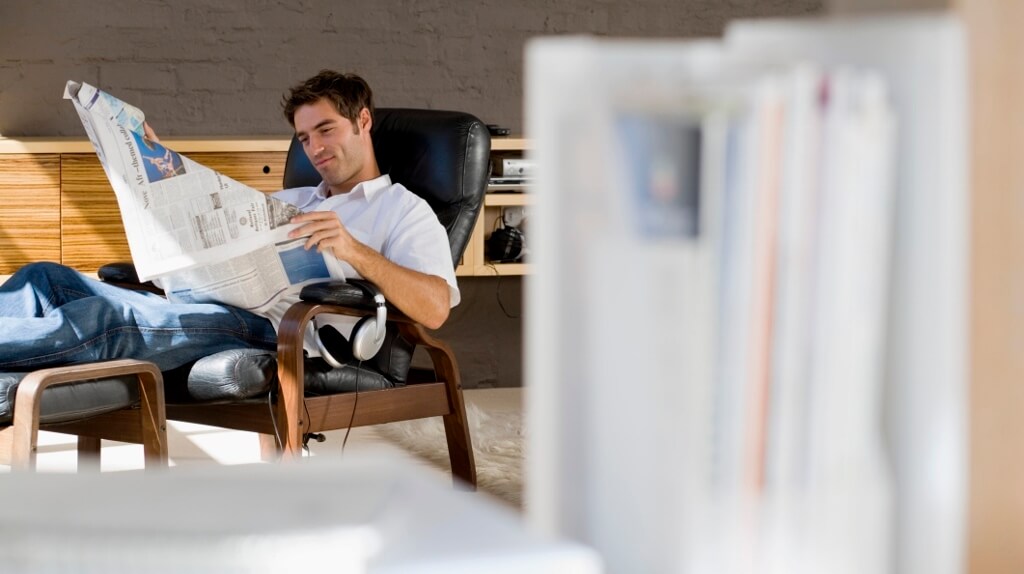Standing desks are all the rage, but are they as good for you as everyone thinks? Some experts reckon the science is a little shaky - here's the balanced view.
Are Standing Desks Better For You?
Standing desks are all the rage, but are they as good for you as everyone thinks? Some experts reckon the science is a little shaky - here's the balanced view.

No-one really knows if standing at work is good for you. Standing-up desks may be hot in the start-up worlds of Silicon Valley and Tech City, but it’s still not clear if this working concept is fad or future.
They say that fashion come in cycles, but, nonetheless, it seems somewhat ridiculous that standing, something the human species has been doing since the beginning of time, has become one of the ‘in’ things in the working world.
This is not just standing up, of course, but rather the concept of standing up when working. It’s the idea that, through a new sit stand desk, you can stand up and be much more efficient and healthy than you would if you were slouched in your office chair. Some would argue that it’s part of our drive to become more efficient and time-effective, whilst also maintaining a healthy lifestyle.
Some start-ups are already trialling this, moving away from sectioned desks and towards stand-up desks and even bean bags and café-like seating areas.
All of the above may sound like a gimmick dreamed-up by futurists and ‘change the world’ start-up bosses, but there is actually some real data behind the move to standing up at work.
One study, co-commissioned by Public Health England last year, found that office workers should spend a minimum of two hours on their feet at work – building up to an ideal four hours – in order to avoid the ill effects of a sedentary lifestyle.
Marvin Dainoff, an ergonomist who is director of the centre for behavioural science at US insurer Liberty Mutual, found that workers who stand up during their workday have “fewer complaints about their health as well as having higher work accuracy”. Furthermore, they take fewer breaks than their sedentary colleagues and get more accomplished.
Meanwhile, Harvard Business Review has previously reported that out of more than 100,000 men and women across the United States, those who sat for at least six hours a day were more likely to die over the course of the 14-year study than those who sat less.
Trials move mainstream – but will prices drop?
As a result, we’ve subsequently seen a flurry of upright desks from IKEA, Varidisk, Elite Office Furniture, and a variety of others. Most of these are selling for around £1,000 each but there are early signs that prices could drop as businesses catch-on to the idea. At the start of 2016, the founder of Hootsuite, Ryan Holmes, created a cardboard stand-up desk which can be bought for just $25 (£17.50).
Some big companies, including US firm General Electric, have begun to trial such desks and proponents have talked up how they can relieve pack pain and other ailments, while making the user feel more healthy and active. A designer friend of this writer says that his Surrey-based start-up used stand-up desks, and that he quickly found that he was more focused, effective and less lazy.
However, despite this, a number of academics dispute whether standing at work is better for you at all.
British academics looking at health status of more than 5,000 people over 16-year period, found standing up at work is no better for you than resting on a chair, while some have suggested that it actually does more harm than good.
“There is a risk to the lower back and lower limbs from standing,” says Karen Messing, who has studied this issue as a professor of biological sciences at the University of Quebec.
Prof Messing told the FT the ideal ratio is roughly 70 percent standing and 30 percent sitting, alternating throughout the day. This could be why a number of stand-up desks now have electric motors to switch between sitting and standing positons.
Elsewhere and TIME Magazine has previously quoted Alan Hedge, at Cornell University, who has claimed that standing for eight to 10 hours a day could lead to increased varicose veins, and a nine-fold increase rate in carotid atherosclerosis (constricted arteries).
This negative feedback isn’t just from professors – there are numerous blogs from people who have tried and failed with stand-up desks, with most complaining of intolerable back pain and general discomfort.
So, is standing the future of your working lives? On the evidence we’ve seen so far, it looks unlikely; no-one has clearly established if this is good or bad for you and the positive case studies are few and far between. However, the working world is forever changing, so we’ll have to take a seat and keep an eye on this going forward.
Top image shows a Stirworks adjustable desk
Thanks for signing up to Minutehack alerts.
Brilliant editorials heading your way soon.
Okay, Thanks!




